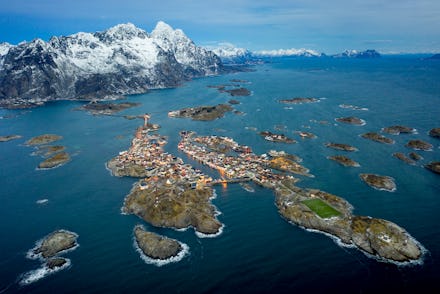The Gulf Stream is at risk of collapse. If it does, the global results would be catastrophic

You've heard of the invisible hand of the market, the supposedly unseen force that drives an economy. Well, meet the unseen hand of the weather: the Gulf Stream. The powerful current that runs through the Atlantic Ocean helps to regulate temperatures across the Northern Hemisphere and serves as a vital sign of the planet's global health.
New research that checks in on the pulse of the Gulf Stream suggests that it might be on life support. According to a study published this week in the journal Nature and Climate Change, the current known as the Atlantic meridional overturning circulation (AMOC) has experienced "an almost complete loss of stability" over the last 100 years and is showing signs of approaching a complete collapse.
We've known that the Gulf Stream was in rough shape for a while now. Research published earlier this year warned that the current's pull was weaker than it has been in over 1,000 years. But the latest finding of researchers indicates that things are worse than we previously imagined. The findings indicate that the AMOC could collapse, falling from its status as a strong circulation that helps to control the climate on both sides of the Atlantic, to a weak circulation that is no longer capable of regulating temperatures.
Understanding how important the Gulf Stream is to the global climate requires knowing what exactly this invisible force does. Think of it as the Atlantic Ocean's conveyor belt. It grabs the warm surface waters from the Gulf of Mexico and carries them all the way up to Western Europe while sending the colder, deeper waters from that region back down south. The current is capable of moving as much as 20 million cubic meters of water per second, about 100 times the rate of movement of the Amazon River. In shifting those waters, the Gulf Stream influences the weather on the east coast of the U.S., Canada, western Europe, and Africa's western coast. The current helps to keep waters warmer during the winter month and has a cooling effect during the summer months that helps to regulate temperatures and stave off extreme weather events that might otherwise take advantage of more favorable and less controlled conditions.
If the Gulf Stream slows, it could spell disaster. The lack of that consistent and predictable current shifting around water could lead to dramatic sea level rises across the east coast of the U.S., extremely cold winters in Europe, and devastating disruptions during monsoon season in the tropics. Drier seasons could do major damage to essential crops in places like India, South America, and Africa, which depend on those annual upticks in precipitation to grow food that feeds billions of people.
None of that is good, and we aren't sure when exactly that collapse could happen, which creates an unsettling amount of uncertainty. Researchers warn that the switch from strong circulation to weak status could happen within the next decade or could take several centuries. But if we don't do something to address climate change, it'll likely happen sooner rather than later. The slowing of the current has occurred largely due to the increased amount of rainfall and the melting of ice sheets around Greenland, which has pushed lighter, warmer freshwater into the stream where dense, cold salt water is supposed to be. Those ice sheets are thawing because the planet is warming.
Reducing our greenhouse emissions and staving off more global temperature rises is the only way to keep the Earth's essential conveyor belt running. If it stops, it'll be like someone suddenly hitting the emergency stop on the treadmill while you're running. Things are going to change, fast, and it won't be pretty.